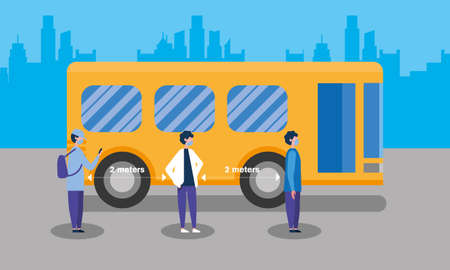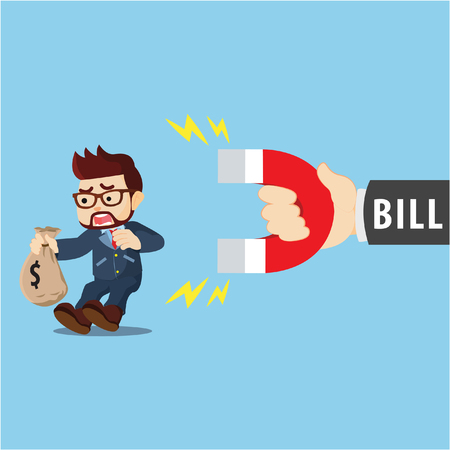1. Introduction to Claims Adjusters
Claims adjusters are a vital part of the U.S. insurance industry, acting as the bridge between policyholders and insurance companies during the claims process. When a customer files a claim—whether it’s for a car accident, home damage, or another covered loss—a claims adjuster steps in to investigate and evaluate what happened. Their main job is to determine how much money, if any, the insurance company should pay out for the claim.
What Does a Claims Adjuster Do?
A claims adjusters core function is to assess insurance claims by gathering information, reviewing policy details, inspecting damages, and talking with all parties involved. They ensure that each claim is handled fairly and according to the terms of the insurance policy.
Key Responsibilities of Claims Adjusters
| Responsibility | Description |
|---|---|
| Investigating Claims | Interviewing policyholders, witnesses, and sometimes law enforcement officers; collecting statements and evidence related to the claim. |
| Reviewing Policies | Examining insurance policies to determine what coverage applies and what exclusions may exist. |
| Inspecting Damages | Visiting accident scenes or property locations to assess physical damage or losses firsthand. |
| Estimating Costs | Calculating repair or replacement costs using industry tools or consulting with experts like mechanics or contractors. |
| Negotiating Settlements | Working with claimants, legal representatives, or other involved parties to agree on fair compensation amounts. |
Why Are Claims Adjusters Critical?
The role of claims adjusters is crucial because they help prevent fraud, ensure customers get fair treatment, and keep insurance operations running smoothly. Without them, there would be no standardized way to decide how much a claim is worth or whether it should be paid at all. Their expertise helps protect both the financial interests of the insurance company and the rights of policyholders.
2. Types of Claims Adjusters
In the U.S. insurance industry, claims adjusters play a key role in helping people and businesses settle their insurance claims. There are several types of claims adjusters, each with unique responsibilities and ways of working. Understanding these different categories helps policyholders know what to expect during the claims process.
Staff Adjusters
Staff adjusters are full-time employees who work directly for an insurance company. Their main job is to handle claims on behalf of their employer. Because they are part of the insurance company, staff adjusters often have access to company resources and systems that help them investigate and resolve claims efficiently. They usually handle all kinds of claims, including auto, home, and business losses.
Independent Adjusters
Independent adjusters do not work for just one insurance company. Instead, they are hired by insurers on a contract basis, especially during times of high claim volume like after natural disasters. Independent adjusters often travel to different locations to assess damage and report their findings back to the insurance companies that hire them. They bring flexibility and extra manpower when insurers need it most.
Public Adjusters
Public adjusters are quite different from staff and independent adjusters because they work for policyholders—not for insurance companies. If you have a complicated or large claim, you might hire a public adjuster to represent your interests. Their goal is to help you get the best possible payout from your insurer. Public adjusters charge a fee, usually a percentage of the claim settlement amount.
Comparison Table: Types of Claims Adjusters
| Type | Who They Work For | Main Role | Typical Situations |
|---|---|---|---|
| Staff Adjuster | Insurance Company (Employee) | Handles claims for the companys policyholders | Everyday claims; standard company processes |
| Independent Adjuster | Insurance Company (Contractor) | Assists insurers when extra help is needed | Catastrophes, surges in claims, special investigations |
| Public Adjuster | The Policyholder (You) | Advocates for policyholders to maximize settlements | Large/complex claims; disputes with insurer |
Main Differences in Responsibilities
The primary difference between these adjusters lies in who they represent and how they approach claims:
- Staff and independent adjusters both serve the interests of insurance companies, focusing on fair but efficient claim resolution.
- Public adjusters, on the other hand, advocate solely for the policyholder, aiming to ensure you get every dollar you’re entitled to under your policy.
This division ensures that everyone involved in an insurance claim has someone looking out for their interests—whether it’s the insurer or the insured.

3. The Claims Adjustment Process
Claims adjusters play a crucial role in the U.S. insurance industry, acting as the bridge between policyholders and insurance companies. Their main job is to make sure claims are handled fairly and efficiently. Let’s take a closer look at the typical steps involved in the claims adjustment process.
Step-by-Step Breakdown of the Claims Adjustment Process
| Step | Description |
|---|---|
| 1. Claim Intake | This is when a policyholder first reports a loss or damage to their insurance company, usually by phone, online form, or mobile app. The adjuster receives basic details about what happened. |
| 2. Assignment of Adjuster | The insurance company assigns a claims adjuster based on the type and complexity of the claim—sometimes specialized adjusters handle auto, home, or commercial losses. |
| 3. Initial Contact | The adjuster contacts the policyholder to introduce themselves, explain the next steps, and gather more information about the incident. |
| 4. Investigation | The adjuster investigates the claim by reviewing documents, interviewing witnesses, visiting the site (if needed), and sometimes working with specialists like contractors or medical professionals. |
| 5. Documentation & Evaluation | The adjuster collects all necessary paperwork: photos, repair estimates, police reports, receipts, or medical records. They evaluate the claim based on policy coverage and evidence gathered. |
| 6. Negotiation | If there are disagreements about costs or coverage, the adjuster may negotiate with the policyholder or third parties to reach an agreement that fits within policy limits. |
| 7. Settlement Offer & Payment | The adjuster presents a settlement offer. If accepted, payment is issued to the policyholder or service providers according to U.S. insurance practices. |
| 8. Closing the Claim | Once all payments are made and paperwork is complete, the claim is officially closed in the insurer’s system. |
Key Tasks for Claims Adjusters at Each Step
- Communication: Keeping policyholders informed throughout each stage is essential for customer satisfaction.
- Accuracy: Ensuring all facts are correct helps avoid disputes later on.
- Timeliness: Quick response and resolution are important for both customers and insurers.
- Fairness: Following state regulations and company guidelines ensures fair settlements for all parties involved.
A Real-Life Example from U.S. Insurance Practice
Imagine someone files a homeowners claim after a hailstorm damages their roof in Texas. The claims adjuster will:
- Review weather reports to confirm the storm happened on the claimed date.
- Visit the property to inspect roof damage and take photos.
- Request repair estimates from local roofing companies familiar with regional pricing.
- Check if similar storms have caused widespread damage in the area (which can affect timelines).
- Offer a settlement based on actual repair costs minus any deductible stated in the homeowner’s policy.
4. Skills and Qualifications Required
Essential Skills for Claims Adjusters
Claims adjusters in the U.S. insurance industry need a unique mix of technical, analytical, and interpersonal skills to succeed. Here are some of the most important skills:
| Skill | Description |
|---|---|
| Communication | Ability to clearly explain findings, negotiate settlements, and interact with claimants, policyholders, and other professionals. |
| Attention to Detail | Carefully reviewing policies, evidence, and documentation to ensure accuracy and fairness in claim processing. |
| Analytical Thinking | Assessing situations, investigating claims, and making fair decisions based on facts and regulations. |
| Customer Service | Providing empathetic support to clients during stressful times and maintaining professionalism. |
| Time Management | Handling multiple cases at once while meeting deadlines for each step in the claims process. |
Training and Education Requirements
While a college degree is not always required, many employers prefer candidates with at least an associate’s or bachelor’s degree in fields like business, finance, or criminal justice. Some insurance companies offer on-the-job training programs for new adjusters to teach them about company procedures, software, and state regulations.
Licensing Requirements by State
In the U.S., most states require claims adjusters to hold a valid license. The specific requirements vary by state. Typically, becoming licensed involves:
- Completing pre-licensing education: Some states require coursework before taking the licensing exam.
- Passing a state exam: Tests knowledge of insurance laws and adjusting practices.
- Background checks: Ensures candidates have no disqualifying criminal history.
- Continuing education: Ongoing learning is often necessary to maintain licensure.
Sample Licensing Requirements Table (Selected States)
| State | License Required? | Exam Required? |
|---|---|---|
| California | Yes | Yes |
| Texas | Yes | Yes |
| Pennsylvania | No (unless public adjuster) | N/A |
| Florida | Yes | Yes |
| Iowa | No (company appointment only) | N/A |
Certifications for Professional Growth
Earning certifications can help claims adjusters advance their careers and demonstrate expertise. Popular certifications include:
- AIC (Associate in Claims): A professional designation offered by The Institutes for advanced claims knowledge.
- CPCU (Chartered Property Casualty Underwriter): A highly respected credential covering broader insurance topics including claims management.
- SCLA (Senior Claim Law Associate): An advanced program focusing on legal aspects of claims adjusting.
The Path to Becoming a Claims Adjuster: Summary Table
| Step | Description |
|---|---|
| Education | Pursue relevant degree (optional but preferred) |
| Training | Complete company training or pre-licensing courses if required by state law |
| Licensing Exam & Application | Sit for state licensing exam (if required) and submit application/background check |
| On-the-Job Experience | Gain practical experience handling claims under supervision |
| Certification | Pursue additional credentials for career advancement |
This combination of skills, training, licensing, and ongoing education ensures that U.S. claims adjusters are well-prepared to handle the complexities of modern insurance claims with professionalism and integrity.
5. Challenges and Trends Facing Claims Adjusters Today
Technology Revolutionizing the Claims Process
In recent years, technology has dramatically changed how claims adjusters work in the U.S. insurance industry. Digital tools and automation now help adjusters process claims faster and more efficiently. Many companies use artificial intelligence (AI) to analyze damage photos, estimate repair costs, and even detect possible fraud. While these advancements improve productivity, they also require adjusters to constantly learn new systems and stay updated on digital trends.
Common Technologies Used by Claims Adjusters
| Technology | Main Use |
|---|---|
| Mobile Apps | On-the-go claim updates and photo uploads |
| Artificial Intelligence (AI) | Damage assessment, fraud detection, cost estimation |
| Cloud-Based Platforms | Secure document storage and collaboration with teams |
| Drones | Property inspections for hard-to-reach areas |
Fraud Detection: Staying One Step Ahead
Insurance fraud is a major concern for the entire industry. Claims adjusters are on the front lines of identifying suspicious activity, such as inflated claims or staged accidents. With more sophisticated scams emerging, adjusters rely on both their investigative skills and advanced software to spot red flags. This means ongoing training is crucial to recognize patterns and use data analytics effectively.
The Customer Experience Factor
Customer service has become a top priority for insurers. Policyholders expect quick responses, transparent communication, and fair settlements. Adjusters are now not just investigators—they’re also customer advocates who must balance empathy with accuracy. Meeting these expectations can be challenging, especially during high-stress situations like natural disasters or large-scale loss events.
Key Ways Adjusters Improve Customer Experience
- Clear explanations of policy coverage and next steps
- Regular updates throughout the claims process
- Fast response times to questions and concerns
- Offering digital options for submitting documents or photos
Evolving Insurance Landscape: What’s Changing?
The insurance world is always shifting due to economic changes, new regulations, and unexpected events like pandemics or severe weather. Adjusters have to adapt quickly when laws change or new types of risks emerge—such as cyber attacks or climate-related damages. This flexibility helps insurers stay competitive while keeping customers protected.
Main Trends Impacting Claims Adjusters Today
| Trend | Description |
|---|---|
| Remote Work & Virtual Claims Handling | More adjusters working from home using digital tools for remote assessments. |
| Increased Weather Events | Rising number of natural disasters creates higher claim volumes and more complex cases. |
| Changing Regulations | Laws around privacy, data handling, and insurance practices continue to evolve. |
| Diversity of Claims Types | New products mean adjusters handle everything from traditional auto accidents to cybersecurity breaches. |
Todays’ claims adjusters need to be adaptable, tech-savvy, and customer-focused as the insurance industry continues to evolve at a rapid pace.


